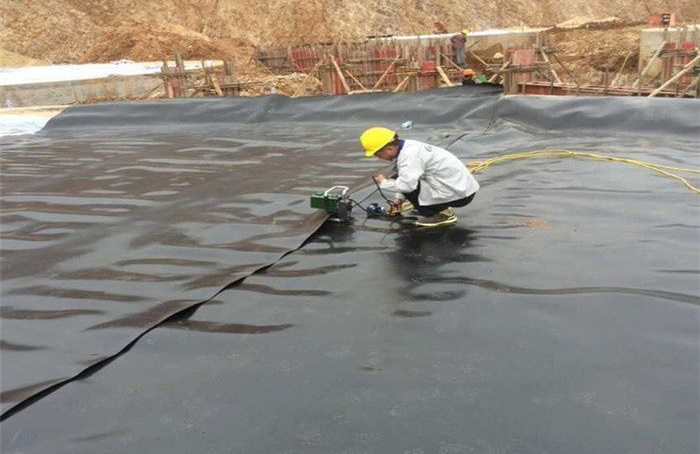High-density polyethylene geomembrane is a thermoplastic with high crystallinity. The appearance of the original HDPE is milky white, and it has translucency on a thin section. Good environmental protection, shock resistance, corrosion resistance, durability. As a new type of material, applications require an understanding of strength, failure motion and response to mechanical loads, how long it takes and how damage occurs.
Introduction of geomembrane
use
1. Anti-seepage of landfills, sewage or waste treatment sites
2. River embankments, lake dams, tailings dams, sewage dams and reservoir areas, channels, reservoirs (pits, mines)
3. Subway, basement and tunnel, culvert anti-seepage lining.
4. Anti-seepage of roadbed and other foundations
5. Embankment, horizontal anti-seepage pavement in front of dam, vertical anti-seepage layer of foundation, construction cofferdam, waste yard.
6. Seawater and freshwater farms. Pig farms, biogas digesters.
7. The foundation of roads and railways, the waterproof layer of expansive soil and collapsible loess.
product type
Geomembrane
Geomembrane includes LDPE geomembrane, LLDPE geomembrane, HDPE geomembrane, rough surface geomembrane, etc.~~
thickness
0.2mm–3.0mm
Width 2.5m—6m
Strength is the ability of a material to resist deformation or failure. The failure phenomenon is the failure behavior of physical and mechanical properties such as damage, fatigue, and wear caused by the material. HDPE membranes endure the corrosion of strong load and strong alkaline leaching solution in the use of urban life and sanitation landfills, and endure climate change in hot winters.The problems of strength, HDPE geomembrane damage and service life are inevitable.
Post time: Mar-07-2022

